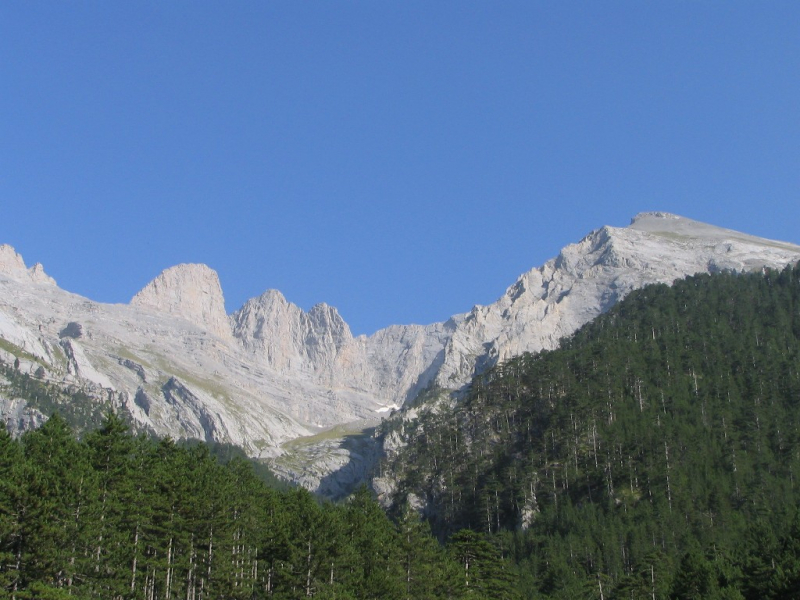Olympus

Mount Olympus, which is known as the home of the Ancient Greek Gods, has Mytikas as its tallest peak, which is also the highest in Greece, looming over the Thessalian countryside at an altitude of 2,917 meters, intimidating and spectacular. Rain and wind shaped Olympus, which resulted in an isolated tower about 3,000 meters (9,800 feet) above the sea, approximately 18 kilometers (11 miles) distant at Litochoro. Olympus is a mountain range with several summits and an almost round shape. The climate in the lower elevations (Litochoro and the foothills) is typically Mediterranean, with hot and dry summers and humid and cold winters. It is more humid and harsh higher up, with more powerful occurrences; it frequently snows all winter in these regions, and raining and snowing are common even in the summer.
The mountain is located between Macedonia and Thessaly, making it an ideal destination for mountaineers and hikers interested in visiting the Pantheon's famous abode. It's a National Park as well as a World Biosphere Reserve. A total of 50 peaks and deep gorges can be found along steep slopes with amazing vistas.
There are numerous paths and trails to take, with varied degrees of difficulty, the most popular of which begins in Litochoro's E4 town. It passes through the breathtaking Enipea Canyon and the Prionia Waterfalls before arriving at the Spilios Agapitos Refuge at 2100 meters. You need consult a local guide to get to the summit or leave the designated areas. The greatest time to visit Mount Olympus is from June through September, as snowfall begins early in the summer.
Location: Greece
Elevation: 2,917 m
Range: Thessaly and Macedonia, near the Gulf of Salonika












